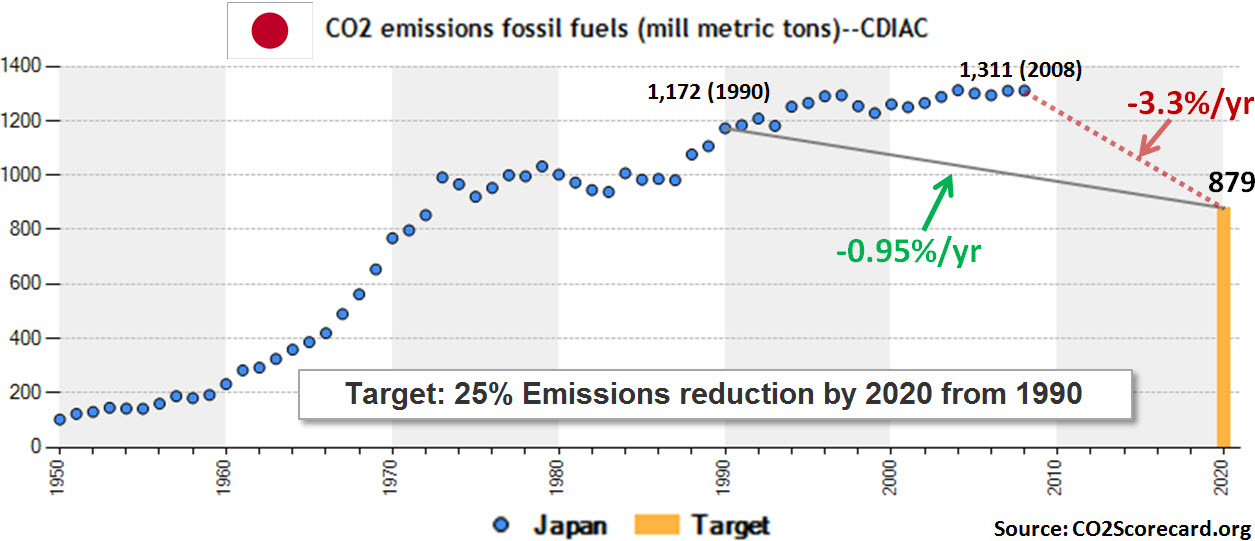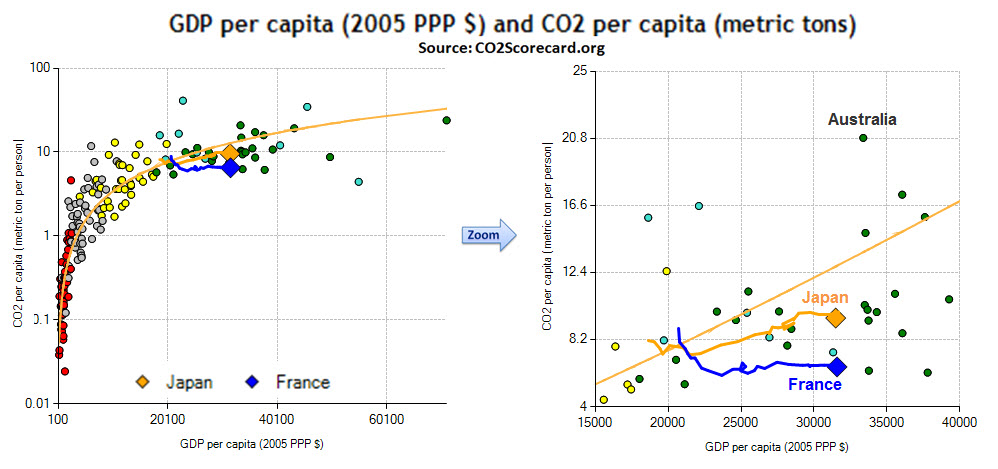Is Japan's CO2 reduction target "too big to succeed"?
Written by: Shakeb Afsah • Apr 24, 2010
Topic: Targets
Japan has committed to reducing its CO2 emissions by 25% by 2020 relative to its 1990 levels. If Japan had steadily reduced its CO2 emissions from 1990, it would have required an average annual reduction of around 0.95% per year. But as shown in the chart below, Japan’s CO2 emissions actually increased by 12% between 1990 and 2008. To achieve its target now, Japan needs to cut its emissions by more than 3% every year for the next ten years. Is this target too big to succeed?

In this research note we want to discuss two policy issues. First we want to highlight the contrast between the CO2 targets of China and Japan. China is a lower income economy with considerable energy gap while Japan is a high income mature economy with three times higher energy use per capita compared to China. But as shown in the exhibit below, Japan already has efficient energy use and CO2 intensity levels. Which means that further improvements in the efficiency of Japan's existing energy infrastructure is going to be a significant policy challenge.

Second we want to compare Japan to France and discuss if France offers a pathway for Japan. Given their income levels, both Japan and France are better than the long run global average for CO2 per capita (both countries are below the regression line). But for similar income levels, France has lower CO2 per capita compared to Japan. As shown by the comparative pie charts of electricity generation by source, the key difference lies in the impact of nuclear energy.


In this forthcoming research note we will further analyze the options available to Japan to reach its CO2 emissions target. We will also review the trend for renewables and clean energy investments in Japan. To stay updated about this research note, please subscribe to CO2 Scorecard on the home page.